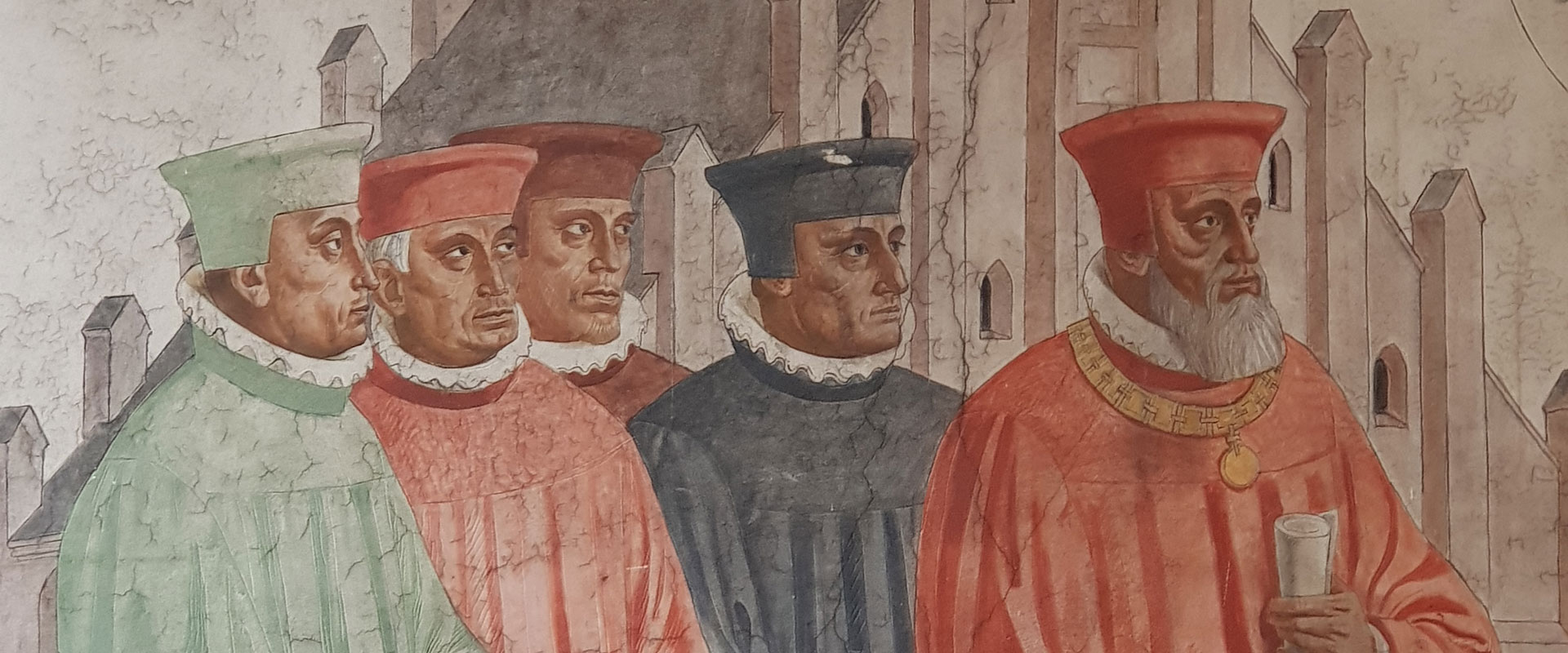The academic dress with gown and mortarboard is the distinctive dress of university scholars all over the world. In Europe, apart from the United Kingdom, it has been abandoned during the last hundred years. However, in recent years under the influence of the American tradition more and more business schools in Europe have been enthusiastic about the idea of wearing an academic dress for the graduation ceremony. In particular the efforts for a common European Union standard (Bologna Process) contribute to this trend. And, last but not least all students are full of envy to their colleagues abroad who can wear the academic dress. The mortarboard and gown are a sign of achievement and fun: „Hooray, we made it!”
The origin of the academic dress tradition lies in the medieval ages (12th/13th century). At that time universities were in clerical hands, teachers were monks and their students also wore a kind of gown with a hood. The first faculties were theology, medicine and law. In Europe until the beginning of the 19th century all professors were also clerics. England was one of the first to abolish this tradition in 1858. Until then gowns and mortarboards were worn every day. Rumour says it was because it was so cold in the lecture halls. In England all professors wore the dress daily long after the WW II, whereas the rest of Europe only at special occasions.
The academic dresses of Oxford and Cambridge University are world famous. Both universities were first mentioned in 1222. Their founder was the best known English cleric, Stephen Langton, archbishop of Canterbury. It was his idea to provide his church servants with a special uniform, the “cappa clausa”, a generously cut gown. After a while this became the role model for the academic dress. Other universities later added a hood, scarf, stole, etc. in order to distinguish themselves from each other.
The “cappa clausa” came to the US with the first colonial settlers. Harvard and other universities adopted it without changes. Only in the late 19th century they made changes to distinguish themselves. In several steps colour and style of the gowns changed for Bachelor, Master and Doctorate gowns. The American Council on Education defined a standard in 1932. However, despite this some universities designed their own standards. Today we have a plethora of different types. Harvard universities has red gowns and Yale blue ones. The academic degree is defined by the cut of the gown. The color of the hood and stole define the faculty.
The cap has its own story. Several theories compete with regard to its origin. In the 5th century VIPs were awarded a squared-shaped “Nimbus” hat. It represents light appearing around a distinguished person, a “nimbus.” Its purpose is to represent spiritual characters through the symbolism of light. For some, in the fifth century, living persons of eminence were equipped with a square nimbus; the memory of this custom and honour is preserved in the academic mortarboard. This could be the origin of the mortarboard. They became very fashionable during the Medici period in Florence. Students returning home took the tradition back to their own countries.
Another theory states that a popular hat during the medieval ages was the “pilleus”, or Birett, a kind of felt cap. It was the hat of the lay brothers and for the first time mentioned in 1311. In the middle of the hat was a little squared button sewn in. Over time it became bigger and bigger and entrenched with a board until it was the mortarboard as we know it today.
Students with their infallible instinct for logic discovered that it resembles the bricklayer’s mortarboard and christened it as such.
Today we have two types of caps. The Cambridge tradition results in a beret-like “softcap” that probably gives a better idea of the 14th-century pileus than its more common rival, the Oxford cap or mortarboard, notorious for its intractability in any kind of breeze. The latter one became the standard type of academic headdress worldwide.
The tassel finds it first historical mention in 1770. In North America, it’s tradition to move it from the right before graduation to the left after receiving the diploma. On all official graduation photos worldwide, the tassel is worn on the left.

